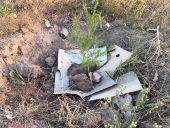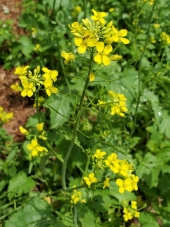Timothy,
I started my comfrey plants in May of 2017. I dug fertile holes in my dense clay soil to provide some initial fertility for the new plants not realizing that they grow extremely well in almost any soil. My holes were about 12” deep and almost the same diameter. I backfilled with a combination of bagged manure topped off with an overly generous dose of bat guano. This was really overkill, but everything I read suggested that comfrey absolutely love nitrogen. In retrospect, this is true for more established plants, but for little baby plants, or root cuttings, probably much less and perhaps no additional nitrogen is more appropriate to get them started.
I started out with 4 comfrey plants and they all rotted in the ground thanks to really excessive rains and my excessive application of nitrogen. I tried again, this time making the fertile hole into more of a fertile mound, added two additional plants in barely any manure/guano mix and the rain let up. Those six plants all survived and are doing nicely.
As for the wine caps, I started them last year. I had a large mound of woodchips that had been sitting around for about a year and I wanted to decompose them and incorporate into my gardens. Based on recommendations from Permies, I flattened out the pile and inoculated on April 10, 2018. I knew I wanted at least some shade so before inoculation I dug 8 fertile holes in the chips and backfilled with bagged manure. This was a multi-purpose exercise. Firstly, I did want to grow something that first year, and I especially wanted to grow tomatoes. Secondly, the tomatoes provided for some dappled shade for the wine caps. Thirdly, wine caps actually like to have some contact with the ground and I thought that manure holes would be a good stand-in for soil. Lastly, and unbeknownst to me at the time, wine cap mycelia like to interact with plant roots. I found a lot of strands of mycelium intricately wrapped around roots by the next spring.
The first six months of wine cap growth was a little disappointing. Over the summer and into the fall nothing seemed to happen. By early December I was wondering what I had done wrong (Redhawk helped me a lot here). But December was fairly warm and very wet. At the beginning of the month, the chips were turning dark, but they still felt like a bunch of chips. If I pushed my hand against them they all resisted my weight. By January the chips felt like a mattress. If I pushed into them, they all yielded to my weight, they were getting soft and spongy, and when I dug into them, I saw plenty of white strands throughout the top several layers of chips. By later spring, I got my first flush of mushrooms. Also, the chips now no longer looked like woodchips, but more like a commercial soil bedding. More and more the bedding looks like a perfect dark, rich, crumbly loam.
After the mushrooms finished, I planted summer squash in the old fertile holes that last year grew tomatoes. The squash is vibrant this year, far better than squash I have grown before, despite my not weeding very much. In fact, the squash is one of the healthiest looking plants I have ever grown. I assumed that the tomatoes used most of the nitrogen in the manure left in the fertile hole from last year, but these squash look great. I would not have thought that I could grow two heavy nitrogen feeders in the same spot without heavy new applications of new nitrogen, yet there the plants grow. I am growing some peas along side the squash to fix nitrogen, but I don’t think they have had time to fix that much nitrogen. I can only assume the microbes in the soil are working their magic.
I am working on getting the rest of my beds converted to woodchip/mushroom
compost beds, but I expect that they have at least two years to go, while my first mushroom bed should be ready for direct seeding by next year.
I will keep this updated as things progress.
Eric


 4
4




 2
2














 1
1



























